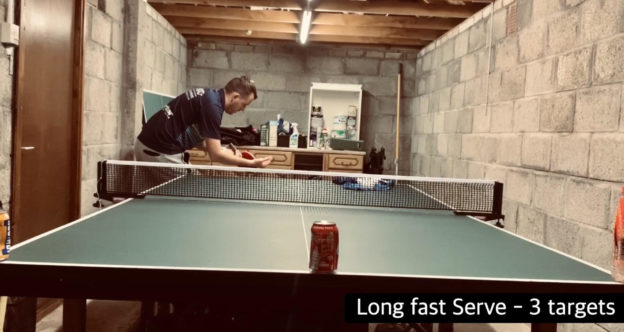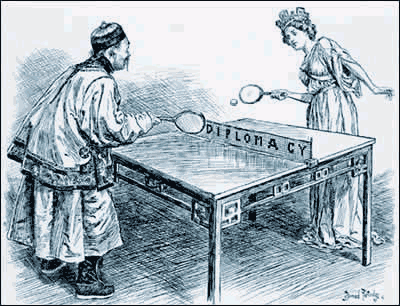History of Table Tennis
Blog piece from our Sports Journalist, Tom Wilde, on the history of table tennis and where it originated from to the sport it is today.
Origins
Table Tennis’ roots can be found in upper-class Victorian England. The standard version of Tennis, lawn tennis, was an immensely popular pass time among the hierarchy of the British class system and it was from there that the popular sport known as “Table Tennis” was born.
It is said that the game originated after dinner parties in the 19th century, where; once the dining had finished, people would use the empty dinner tables as the platform for their new miniature version of tennis. Books would line up along the middle of the table to act as a net, while the ball would often be a golf ball, ball of string or even a wine cork. Without the current incarnation of a Table Tennis bat, they would use things such as books, or more unusually, the lids of empty cigar boxes as bats.
The Name
The name ‘Table Tennis’ was not actually coined until the 1920’s in Europe. Before that, it had a variety of different names before the name “Ping-Pong” was patented in 1901 by English manufacturer J. Jaques & Son Ltd. This was chosen as it was one of the more popular names for the sport. This trademark was later sold to the Parker Brothers in the United States.
It had previously been referred to by names such as “wiff waff” and “flim-flam” – due to the nature of the back and forth action involved. Interestingly enough, current London Mayor Boris Johnson still refers to it as “whif waff”!
Development of The Sport
The early 20th century was a very exciting time for the sport in terms of growth in popularity and the refinement of the game as a whole. Table Tennis balls as we know them today, were first discovered in 1901 while Englishman James Gibb was on a trip to the USA, he found them to be ideal for Table Tennis.
It was just two years after that that a rubber face on a wooden blade was developed as a ’racket’ to be used while playing the sport. E.C Goode was the man who developed this early version of the Table Tennis bat.
The game was evolving at an incredible speed, with tournaments being organised, books being written and even an unofficial World Championship that took place in 1902. The first official World Championships were held in 1926 where Hungarian Roland Jacobi took the men’s singles trophy and teamed up with Daniel Pecsi to win the doubles trophy.
Hungary dominated in the first 10 years of World Championships and the only non-Hungarian to win the men’s single title in the first nine years of it’s existence was legendary Brit Fred Perry, more known for his success in Tennis.
50s and 60s Evolution
The game was spreading all over the world and by the 50s and 60s it was very popular in both Europe and Asia. It is said that Asia was introduced to the game by British army officers stationed in the East. It was also in this time that the bats used in Table Tennis were evolved to a point where they more closely resemble what players use today. It revolutionised the way the game could be played and the skills that players could use.
Modern Day Variant of Game
It was in 1988 that the sport was introduced to the Olympic Games and this helped break up the Asian dominance of the sport, for a brief stint in the early 90s. China are current holders of the World Championships and continue to dominate the sport.
The rules were changed after the Sydney Olympics to make the game more viewer friendly to a TV audience: Balls were made bigger, to increase wind resistance in order to slow the game down a bit as the fast paced nature of the game made it difficult to watch on TV. The points system was also changed so that games would score to 11 points as opposed to the old 21 system, designed to make games more exciting.
It is this current version of the game that we know as Table Tennis!




